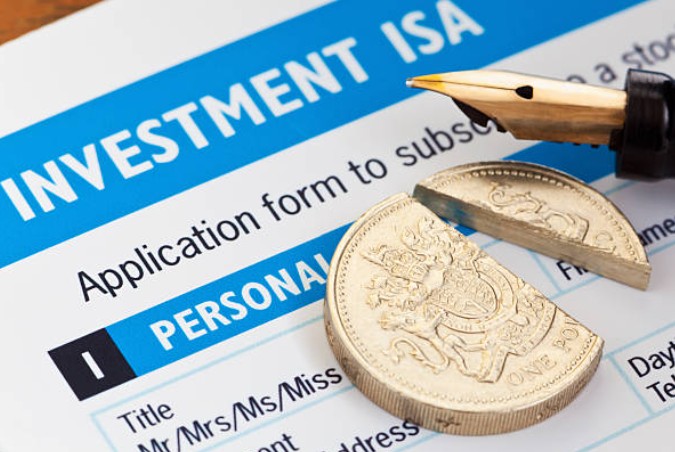What Is an Investment ISA Account? For many UK savers, the Investment ISA (Individual Savings Account) is a gateway to building wealth in a tax-efficient manner. Whether you’re a seasoned investor or just starting, understanding the nuances of an Investment ISA Account is vital for securing your financial future. In this in-depth guide, we will explore every aspect of Investment ISA accounts—from what they are and how they work, to why they matter and how to get started. Tailored specifically for a UK audience, this comprehensive post will help you navigate the world of investment ISAs with clear, actionable insights.
What Exactly Is an Investment ISA Account?
An Investment ISA Account is a tax-efficient investment vehicle provided to UK residents. It allows you to invest in a broad range of assets, including stocks, shares, bonds, funds, ETFs, and even some alternative investments, with the key benefit that any returns you earn—whether through dividends, interest, or capital gains—are free from UK tax. This allows you to retain a larger portion of your funds as your investments increase in value over time.
Key Features at a Glance:
- Tax Efficiency: Enjoy tax-free profits, making your investment returns more valuable.
- Wide Investment Choice: Invest in various asset classes like equities, bonds, mutual funds, and ETFs.
- Contribution Limit: Stay within the annual ISA allowance set by HMRC (currently up to £20,000).
- Long-Term Growth: Designed with a focus on building wealth over time rather than providing short-term liquidity.
Why Choose an Investment ISA Over Other Savings Options?

Choosing an Investment ISA Account over other savings options can be incredibly beneficial if you’re aiming for long-term wealth creation. Here’s why:
- Enhanced Growth Potential:
Investment ISAs typically involve exposure to the equities and bond markets, which historically offer higher returns over time compared to traditional savings accounts. - Tax Advantages:
Unlike standard savings accounts, the gains in an Investment ISA are not subject to Capital Gains Tax or additional income taxes, optimizing your net returns. - Risk Mitigation Through Diversification:
With the option to invest in a range of assets, you can build a diversified portfolio that mitigates risk compared to putting all your funds in one investment category. - Flexibility of Investment Options:
You can switch between different asset classes as your financial goals and risk tolerance change, giving you dynamic control over your investments. - Convenience:
Many ISA providers offer user-friendly platforms allowing you to manage your investments online, set up direct debits, and even automatically reinvest dividends.
How Do Investment ISA Accounts Work?
The tax-free structure of an Investment ISA means you don’t pay tax on the income earned from your investments. Let’s take a deeper dive into how it works:
- No Capital Gains Tax:
Any increase in the value of your investments is completely tax-free. This is particularly beneficial if you experience significant market gains over time. - Dividend Tax Relief:
Dividends paid out by your investments within an ISA are not taxed, allowing you to reinvest the full value of your earnings. - Interest-Free Reinvestment:
Growth in the ISA can be compounded over the years without any tax deductions, which significantly boosts the long-term growth potential of your savings. - Annual Contribution Limit:
The annual ISA allowance (currently £20,000) limits the amount you can invest each tax year, ensuring that savers remain within regulated financial boundaries while maximising benefits.
What Are the Historical and Regulatory Contexts Behind Investment ISAs?
Investment ISAs were introduced as part of a broader initiative to encourage saving and investment among UK residents. Here are some historical and regulatory insights:
- Evolution of the ISA:
The ISA was first introduced in 1999 to replace the earlier tax-privileged savings accounts. Over the years, the ISA has evolved to include both cash and investment varieties, catering to different risk profiles and financial goals. - Regulatory Framework:
Regulated by HMRC, Investment ISAs are part of a suite of financial products designed to promote long-term savings. The annual contribution limits are adjusted periodically to reflect economic conditions and government policy. - Investor Protection:
ISAs are subject to strict regulatory standards, including transparent fee structures and robust consumer protections, ensuring that your investment is managed responsibly. - Market Adaptations:
With the advent of online investment platforms and robo-advisors, managing an Investment ISA has become increasingly accessible to everyday savers, democratizing investment opportunities that were once only available to the elite.
How Can You Get Started with an Investment ISA Account?
If you’re ready to embark on your investment journey, here’s a step-by-step guide to setting up your Investment ISA:
1. Educate Yourself on the Basics:
-
- Familiarize yourself with key terms and concepts like risk tolerance, diversification, and asset allocation.
- Understand the current annual ISA allowance of £20,000 and how it applies to your financial goals.
2. Assess Your Risk Tolerance and Objectives:
-
- Short-Term vs. Long-Term:
Determine if your financial goals are near-term (e.g., buying a home) or long-term (e.g., retirement planning). Investment ISAs are best suited for long-term growth. - Risk Appetite:
Assess your risk tolerance carefully. While stock investments can provide greater returns, they also come with increased volatility, whereas bonds and gilts tend to offer more stability.
- Short-Term vs. Long-Term:
3. Research Providers and Compare Options:
-
- Compare fees:
Look at the commission rates, management fees, and any other costs involved. Even small fees can significantly impact your overall returns over time. - Platform Features:
Evaluate the platform’s user-friendliness, the quality of customer support, and the range of investment opportunities offered. - Reputation and Reviews:
Check feedback and ratings from existing customers to make sure you select a provider with a proven history of reliability.
- Compare fees:
4. Open Your ISA Account:

-
- Complete the online or paper application provided by your chosen ISA provider.
- Submit the necessary identification documents for verification.
- Fund your account within the annual limit set by HMRC.
5. Build and Diversify Your Portfolio:
-
- Asset Allocation:
Spread your investments across different asset classes. For example:- Equities: For growth potential.
- Bonds: For stability and lower risk.
- Funds/ETFs: For diversified exposure to multiple sectors.
- Rebalancing Strategy:
Regularly review your portfolio to maintain your desired asset mix as market conditions evolve.
- Asset Allocation:
6. Monitor and Review Regularly:
-
- Track Performance:
Use online tools and apps provided by your ISA platform to monitor your investments. - Stay Informed:
Keep up-to-date with market trends and legislative changes that might affect ISAs. - Adjust Allocations:
Based on performance and changing financial goals, rebalance your portfolio periodically.
- Track Performance:
What Are the Benefits and Drawbacks of Investment ISA Accounts?
While Investment ISA accounts offer many advantages, it’s important to be aware of potential drawbacks:
Benefits:
- Tax-Free Growth:
Maximizes your overall returns by eliminating tax on your investment gains. - Diversification:
The ability to invest in multiple asset classes reduces risk exposure. - Flexibility:
You have the freedom to switch between various investment products as your needs and market conditions change. - Long-Term Savings Vehicle:
Ideal for retirement planning or long-term wealth accumulation.
Drawbacks:
- Market Volatility:
Investment values can fluctuate, and there is always a risk that you might incur losses. - Contribution Limit:
The annual cap of £20,000 can restrict how much you can invest within a single tax year. - fees:
Depending on the provider, management fees and other charges can eat into your returns. - Complexity:
Not suitable for those unfamiliar with financial markets; requires a certain level of knowledge and ongoing engagement.
Investment ISA Account Performance Snapshot
Below is a detailed table chart summarizing typical returns, risk ratings, and key benefits of various investment options within an ISA:
| Investment Type | Average Annual Return | Risk Level | Key Advantage | Considerations |
| Stocks & Shares | 5-8% | High | High growth potential over long periods | Subject to market volatility and economic cycles |
| Mutual Funds / ETFs | 4-7% | Medium | Diversification and professionally managed funds | Management fees and market fluctuations |
| Bonds & Gilts | 2-4% | Low to Medium | Stable income with lower volatility | Lower potential for high growth compared to equities |
| Cash ISA (for context) | 1-2% | Very Low | Capital preservation and guaranteed returns | Limited growth potential in low-interest environments |
Final Thoughts: Your Next Step Toward Financial Empowerment
What Is an Investment ISA Account? It is more than just an investment vehicle—it’s a tool that can empower you to save and grow your wealth tax-free. By understanding the underlying principles, benefits, and potential challenges, you can make informed decisions to shape a secure financial future. Whether you are just beginning your investment journey or rebalancing an established portfolio, the insights detailed in this guide provide you with the knowledge to navigate the complex world of investments.
Frequently Asked Questions (FAQs)
Are Investment ISAs Suitable for Short-Term Savings?
Generally, Investment ISAs are best suited for long-term financial goals due to potential market fluctuations. For short-term savings, a Cash ISA might be a more secure option.
How Is the Performance of My Investments Within an ISA Monitored?
Many ISA providers offer online dashboards and mobile apps that allow you to track performance, assess portfolio diversification, and receive updates on market trends. Regular reviews are recommended.
Can I Hold Multiple Investment Types in One ISA?
Yes, most providers allow you to hold a variety of investment types—including stocks, funds, ETFs, bonds, and more—within a single ISA account, which supports diversification and ease of management.






